In our lab, we use interdisciplinary methods to investigate challenging problems that impact:

SaCRED Socially and Culturally Relevant Design projects...
DIETS Design Insights through Eye Tracking and Sensors projects...
DTaPS Design Thinking and Problem Solving projects...
This collaboration will center on fundamental research related to the modeling of trust behavior in humans over time and across mobilities.
Human interaction with autonomous cyber-physical systems is becoming ubiquitous in consumer products, transportation systems, manufacturing, and many other domains. This project seeks constructive methods to answer the question: How can we design cyber-physical systems to be responsive and personalized, yet also provide high-confidence assurances of reliability? We are working on this National Science Foundation (NSF) Collaborative project with three other faculty members at Purdue (Dr. Neera Jain, ME, Dr. Inseok Hwang, Aeronautical Engineering and Dr. Brandon Pitts, Industrial Engineering) and three other universities. Our interdisciplinary team (where our team was the only one selected in 2019 for this highly competitive award) is working to address the following question: How can we design cyber-physical systems to be responsive and personalized, yet also provide high-confidence assurances of reliability? The objective here is to create a system that adapts to the human while the human is interacting with a given CPS. As the system adapts, it provides feedback to the human to enhance the human’s performance. We are building on our discoveries from the last five years, to build a human-architecture our team calls “cognitive autonomy” where we combine human psychophysiological and behavioral measures with objective measures of performance. In this work, the architecture provides transparent communication which supports trust and situational awareness.
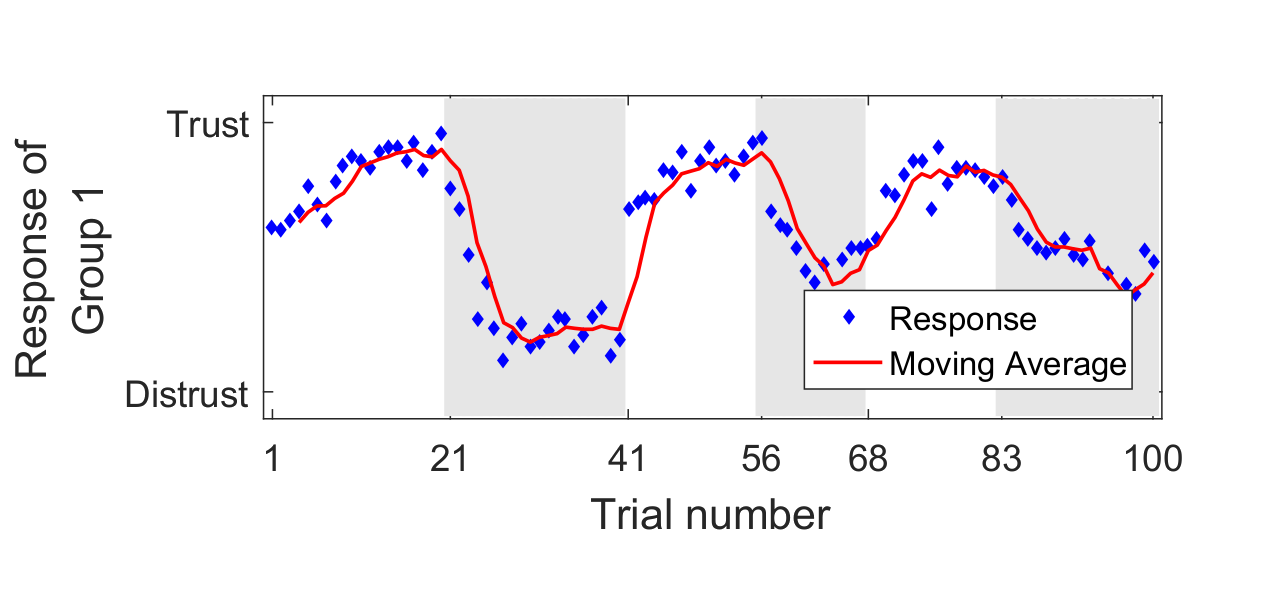
Human trust in automation plays an important role in successful interactions between humans and machines. In this project, we propose an empirical trust sensor model that maps psychophysiological (e.g. EEG and galvanic skin response) measurements to human trust level. The results show that psychophysiological measurements can be used to sense trust in real-time. In addition, we established a linear third-order model that captures the dynamic variations of human trust in autonomous systems based on human subject studies. We also discuss the effect of demographics, such as national culture and gender, on trust behavior. These demographic-based models can be used to help autonomous systems further predict variations in human trust dynamics.
Relevant Publications:
![]()
Design outcomes prediction from electroencephalography (EEG) could be used in many applications as it allows us to correlate engagement and cognitive workload with ideation effectiveness.
It further establishes a basis for connecting EEG measures and common constructs in engineering design research.
In this research, we propose a support vector machine (SVM) based prediction model for design outcomes using EEG metrics and some demographic factors as predictors.
The results characterize the combination of engagement and workload that is correlated with good design outcomes with respect to novelty, quality, and elaboration.
Findings also suggest that EEG technologies can be used to partially replace or augment traditional ideation metrics and to improve the efficacy of ideation research.
Relevant Publications:

Automotive industries develop complex products.
The evolution of an automotive design is always a lengthy and dynamic process that must be controlled to ensure the selection and completion of a design at a time that is cohesive with a company’s strategy.
A better understanding of the customers will help in making this selection and decision.
This research seeks to go beyond verbally expressed customer feedback to considering information obtained through biometric sensors during product evaluations.
Relevant Publications:
Many people with curly hair experience heat damage - loss of curls and structural integrity of hair - after repetitive use of flat irons. However, little is known understood about its effect of heat except that it is detrimental. As a result, people are driven to avoid heat altogether while laborious method to satisfy persevering demand for hair straightening. In the work, we attempt to establish a predictive model which can forecast the failure of hair; it will serve as a tool for decision making which will positively impact flat iron users' overall grooming experience.
Relevant Publications:

An important part of understanding the effects of heat on human hair is understanding how heat behaves in hair. Extensive literature review revealed that study on thermal properties of human hair is extremely limited despite the significant implication that use of flat irons posits on people's hair care experiences. The research attempts to develop an accurate, reliable measurement technique for thermal diffusivity of monofilaments and extend it to measurement of thermal diffusivity of human hair.
Relevant Publications:

Understanding how people engage with the material world is a key area in studying what it means to be human. An interdisciplinary approach is highly beneficial for investigating how humans use objects and what these objects mean and represent to them in different contexts. As new biomedical technologies and devices proliferate for example, it is timely to investigate how we can strengthen the connection between social science and design thinking. This project explores that intersection. By doing so, we aim to create design processes that can better account for diverse human experiences and abilities.
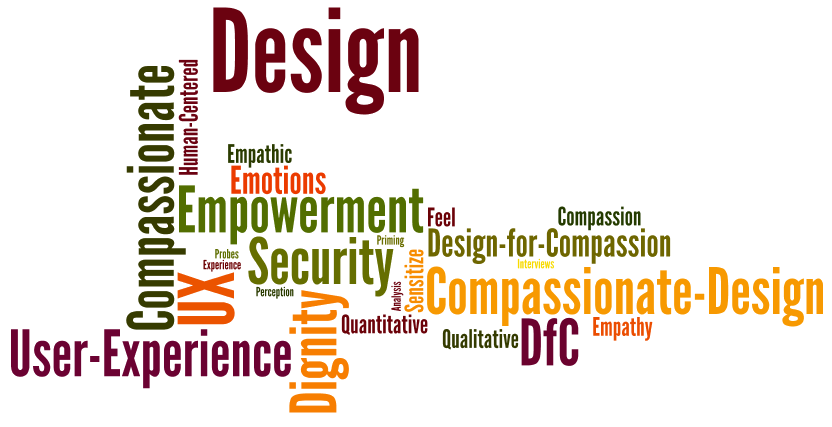
The purpose of this project is to establish an empirical basis for quantifying and integrating compassion factors into the design process and providing a formal method for instilling compassionate design thinking skills in engineering students.
The Merriam Webster dictionary defines compassion as: a sympathetic consciousness of others’ distress together with the desire to alleviate it.
We define compassion factors as physical or psychological interventions that can serve to reduce/eliminate perceived or actual distress in individuals during interaction with an artifact.
Compassionate design thinking is the ability to think through, identify, and potentially implement compassion factors in the design process.
A number of present day challenges warrant the need for compassionate design thinking, however a formal method does not exist.
While engineering design researchers have demonstrated the impact of customer preferences during early stage design, little effort has been given towards understanding how a resulting product or system may change if the engineer had a deeper understanding of the confounding effects of the product interaction and context on individual distress.
Relevant Publications:
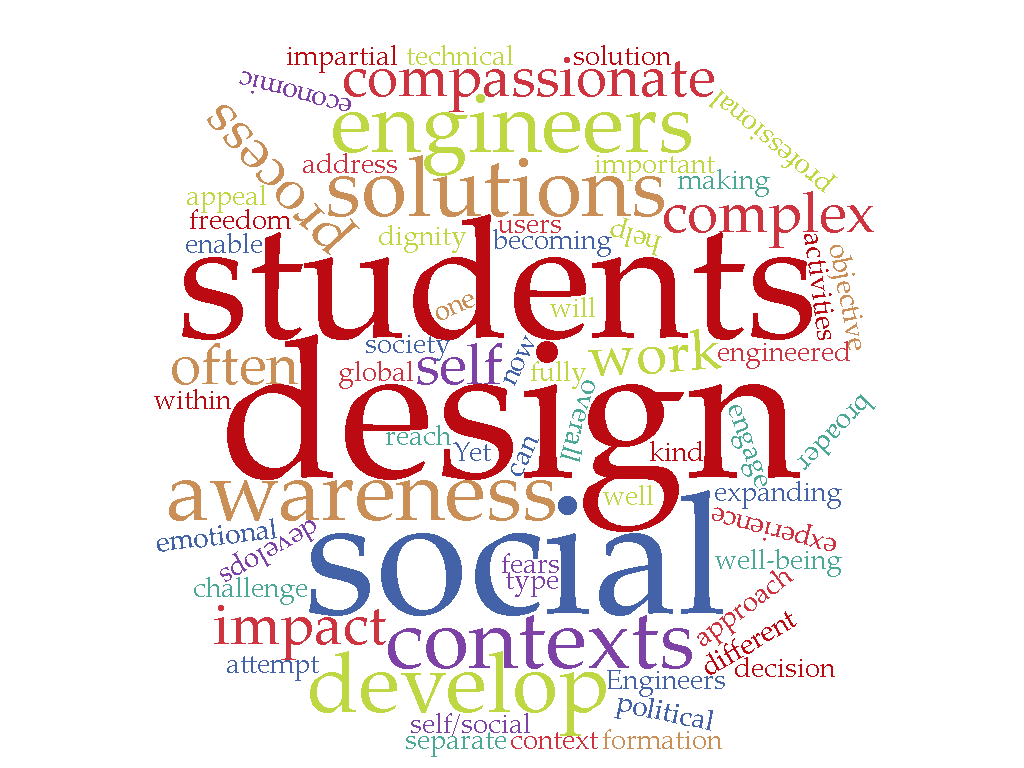
The objective of this project is to initiate research on how compassionate design activities can help develop engineering students’ self and social awareness. Engineers design solutions within complex contexts that often have broader social, political, economic, and environmental impact. However, research has shown a culture of disengagement in the professional formation of engineers. This culture of disengagement is one where engineers often separate the technical aspects of their work from the social context of the solution in an attempt to be impartial and objective in their decision making. Yet the complex social contexts in which engineers design are becoming more and more important as engineered solutions now have an expanding reach in our global society. To more fully engage engineering students’ in social contexts, this project will challenge engineering students to be compassionate in their design work to develop solutions that address users’ fears, dignity, freedom, and emotional well-being. For example, they may design cancer diagnostic equipment that moves away from the sterile, robotic aesthetic toward a softer, friendlier experience for these highly emotional situations. The research team will explore how this kind of design experience develops engineering students’ self and social awareness as well as their overall approach to the engineering design process.
Relevant Publications:
*Seshadri, P., Joslyn, C. H., Hynes, M., and Reid, T. (2019), Compassionate Design: Considerations that Impact the Users’ Dignity, Empowerment and Sense of Security, Design Science Journal, Vol 5, e21

In this research, we investigated millennials’ perception of the proposed next-generation car sounds and other product sounds. A subjective test was conducted to determine sound preferences when people were presented with a current sound, a very different sound, and something in between the two. The results showed that millennials preferred traditional sounds in most contexts and their sound preferences aligned with certain sound evaluations and verbal descriptions. Participants’ verbal descriptions of the sounds provided interesting insights into the relationship between the sound evaluations and participants’ perception of the sounds. These results may shed light on how to integrate millennials’ preferences into the design of future product sounds.
Relevant Publications:
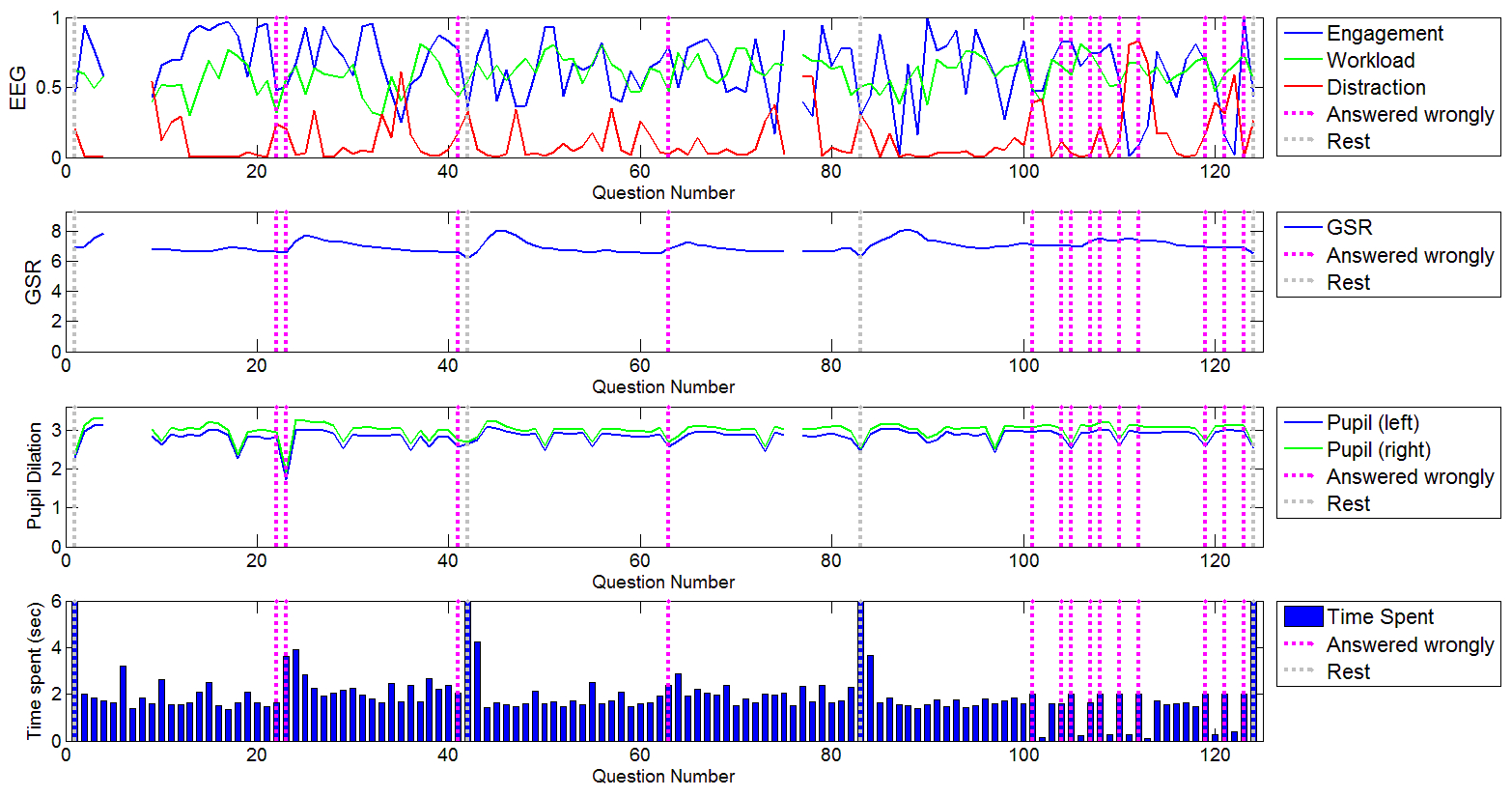
Mitigating human errors is a priority in the design of complex systems, especially through the use of body area networks. This project describes early developments of a dynamic data driven platform to predict operator error and trigger appropriate intervention before the error happens. Data was collected using several sensors (e.g., electroencephalography, pupil dilation measures, and skin conductance). Dynamic system analysis methods were then used to analyze the raw data using principal components analysis and the least squares complex exponential method. The results show that the algorithms have the potential to capture mental states in a mathematical fashion, thus enabling the possibility of predicting operator error.
Relevant Publications:

Functional decomposition is a method used in the design process to assist engineers with identifying the key functions that a proposed design should have, prior to generating solutions or identify the functions of a product they have dissected.
One of the challenges with functional decomposition is that novice engineers are often hindered in their thinking during original design tasks.
This research sought to conduct empirical studies to examine various functional decomposition methods and to determine their effectiveness under different conditions.
Relevant Publications:
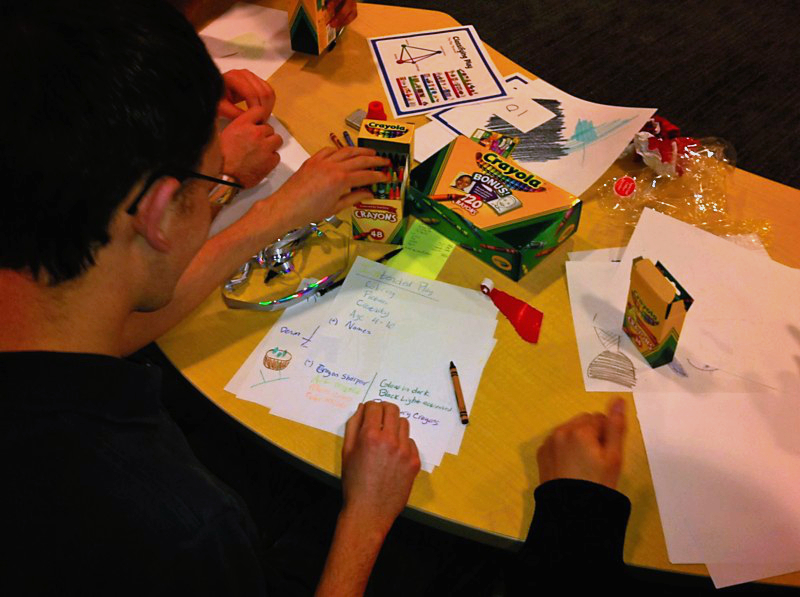
Warm-ups are commonly used before ideation in fields like industrial design, but not engineering. Could warm-ups improve how engineers think during early design? Three interventions were chosen for the study: no warm-up, a sketching warm-up, and art-based cognitive warm-ups. We used psychophysiological tools (B-Alert X10) and self-report instruments to measure how mental states changed during a design task. Warm-up groups spent more time in a passive engagement state, with the art-based activities group having a stronger effect. The passive engagement state is associated with defocused attention and creativity. We also found effects due to gender and other demographic factors. We recommend using an art-based warm-up activity prior to concept generation in order for engineers to achieve a passive engagement state.
Relevant Publications:

In this research, we used eye-tracking technology to observe how students solve statics problems. In a within-subject experiment, participants were asked to solve nine statics problems shown on a computer display. A non-invasive eye-tracker was used to record participants’ eye movements during the problem solving process. The results show that different eye gaze patterns exist between those who solved problems correctly and those who solved them incorrectly. This investigation showed that eye gaze data has the potential to serve as a diagnostic tool to discern how students solve statics problems and understand related engineering concepts.
Relevant Publications: